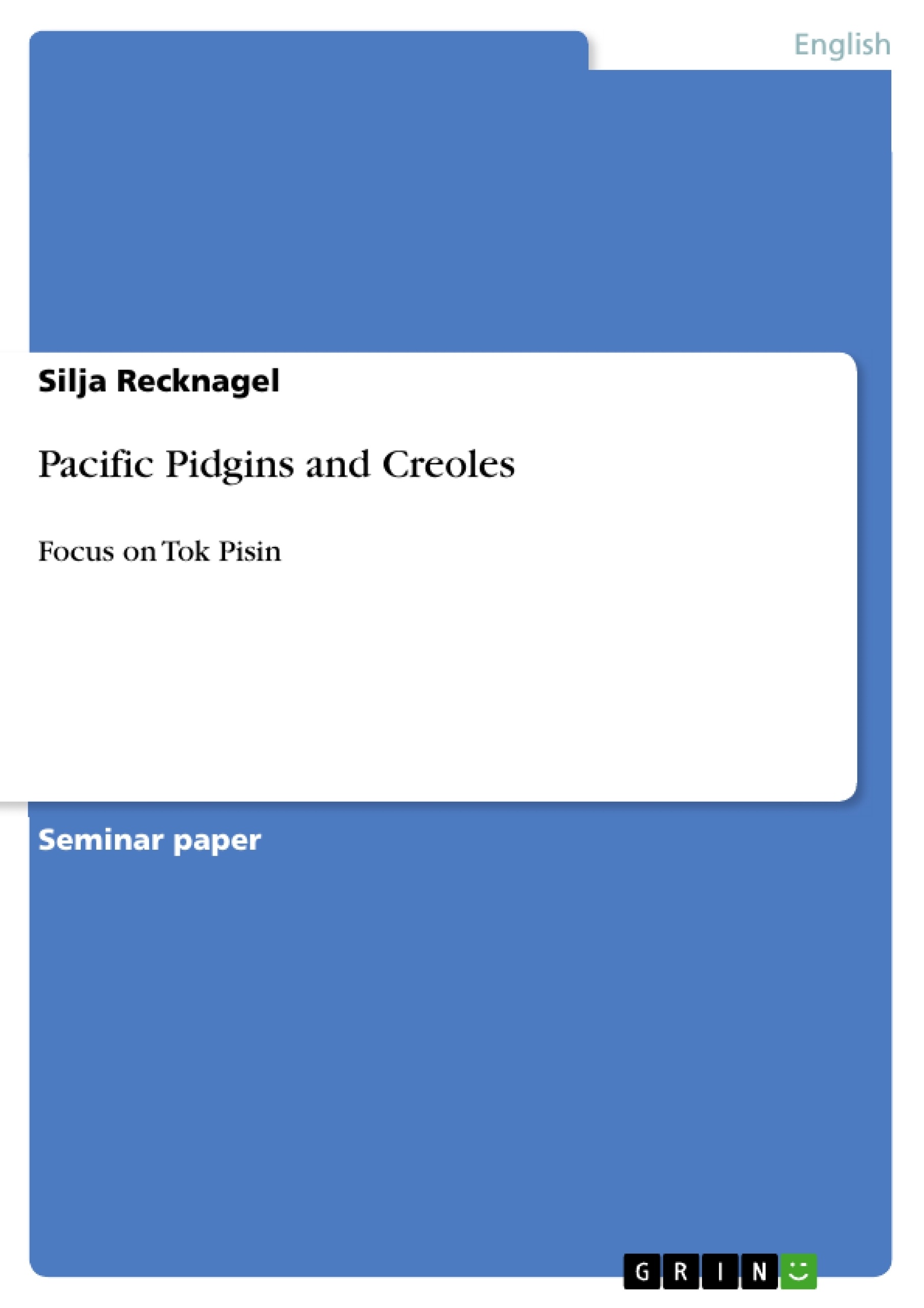This essay aims at taking a closer look at the Pacific pidgin Tok Pisin. Especially the development of the pidgin into a creole will be considered in the following text.
The chapter on the history of Tok Pisin is preceded by an excursus on the conditions of language contact and the definition and genesis of pidgins in general. The history and thus the development into a creole as well as the current situation of Tok Pisin is completed with some examples of the lexicon of the creole. Here I laid certain emphasis on the different origins of English influence on Tok Pisin, as the social backgrounds of those who introduced the first form of the pidgin, the foreigner talk, are still reflected in the Tok Pisin vocabulary. Additionally I paid regard to the German influence on the pidgin and the linguistically changed situation under Australian administration after WWI. This part of the essay includes a brief paragraph on the sociolinguistic conditions and the conscious use of speech acts with in the pidgin.
Finally I tried to give a rather short overview on the phonological and morphological features of Tok Pisin as well as on its grammar.
Inhaltsverzeichnis (Table of Contents)
- Introduction
- Pidgin and Creoles: A Result of Language Contact
- Melanesian Pidgin- Focus on Tok Pisin
- Historical background of Tok Pisin
- Development into a Creole
- Linguistic features of Tok Pisin
- Lexicon
- Words from occupational registers
- Words from regional dialects
- Words from criminal cant and sailors´ jargon
- Changes
- Morphology and Phonology
- Suffixes
- Phonology
- Grammar
- Tense markers
- Prepositions
- Lexicon
- Conclusion
- References
- Internet sources
Zielsetzung und Themenschwerpunkte (Objectives and Key Themes)
This essay aims to delve into the Pacific pidgin Tok Pisin, particularly focusing on its evolution from a pidgin to a creole. The text explores the historical background of Tok Pisin, including its development and current status. The essay also examines the linguistic features of Tok Pisin, including its lexicon, morphology, phonology, and grammar. It highlights the English, German, and Australian influences on Tok Pisin and considers the sociolinguistic contexts in which the language is used.
- The development of Tok Pisin from a pidgin to a creole
- The historical background of Tok Pisin
- The linguistic features of Tok Pisin, including its lexicon, morphology, phonology, and grammar
- The influence of English, German, and Australian languages on Tok Pisin
- The sociolinguistic contexts of Tok Pisin
Zusammenfassung der Kapitel (Chapter Summaries)
The introductory chapter establishes the focus of the essay on Tok Pisin, outlining its development from a pidgin to a creole. The essay begins with a brief overview of pidgins and creoles, highlighting their origin in language contact situations and their defining characteristics. It emphasizes the role of European languages, particularly English, in the formation of many pidgins and creoles.
Chapter two delves into the specific context of Melanesian pidgins, focusing on Tok Pisin. It provides a brief overview of the other Melanesian pidgins, Bislama and Pijin, while highlighting their shared features and mutual intelligibility. The chapter also considers the co-existence of other languages, such as English and French, alongside these pidgins in their respective regions.
The third chapter examines the historical development of Tok Pisin, tracing its evolution from a pidgin to a creole. It explores the various influences on Tok Pisin's lexicon, including occupational registers, regional dialects, criminal cant, and sailors' jargon. The chapter also highlights the impact of German and Australian administration on the development of Tok Pisin.
The fourth chapter explores the linguistic features of Tok Pisin, including its morphology, phonology, and grammar. It delves into the suffixes, phonological features, and grammatical elements of the language, providing a comprehensive overview of its linguistic structure.
Schlüsselwörter (Keywords)
The essay focuses on the development, linguistic features, and sociolinguistic context of Tok Pisin. Key topics include language contact, pidginization, creolization, lexicon, morphology, phonology, grammar, and the influence of English, German, and Australian languages on Tok Pisin.
- Citation du texte
- Silja Recknagel (Auteur), 2005, Pacific Pidgins and Creoles , Munich, GRIN Verlag, https://www.grin.com/document/86343



